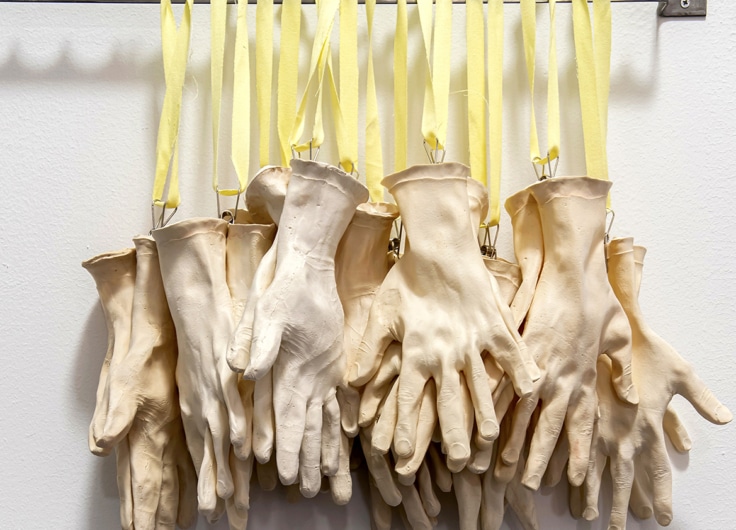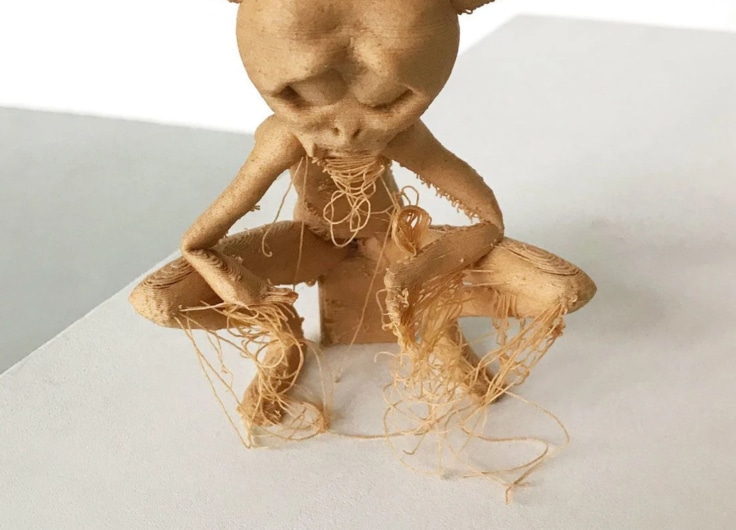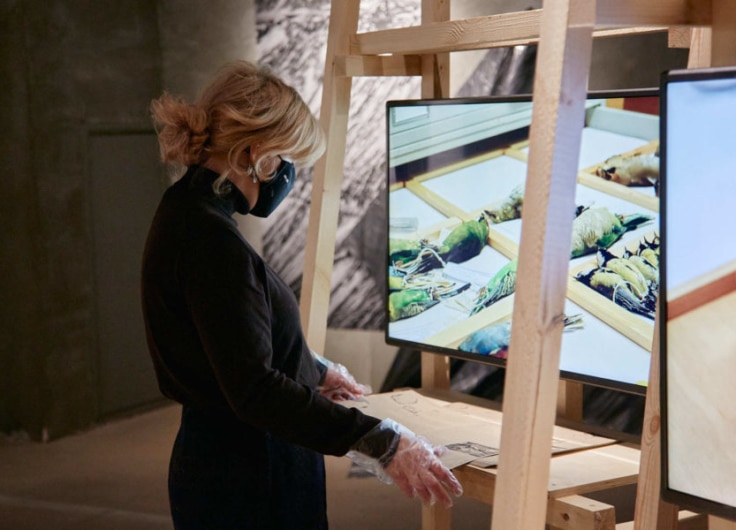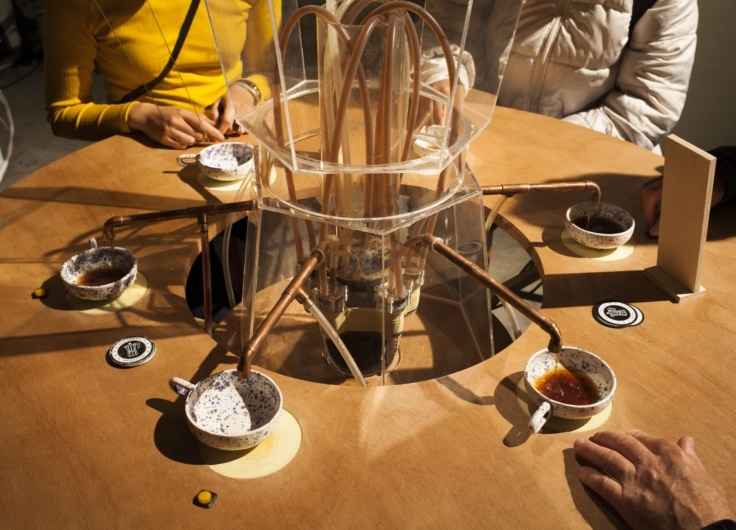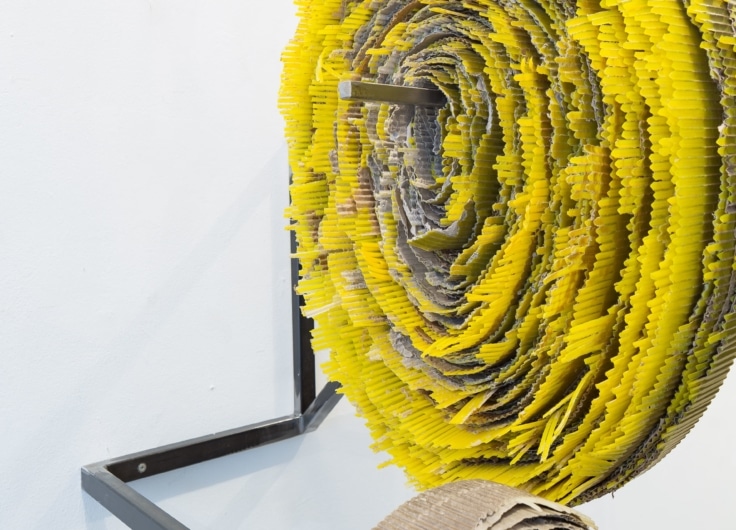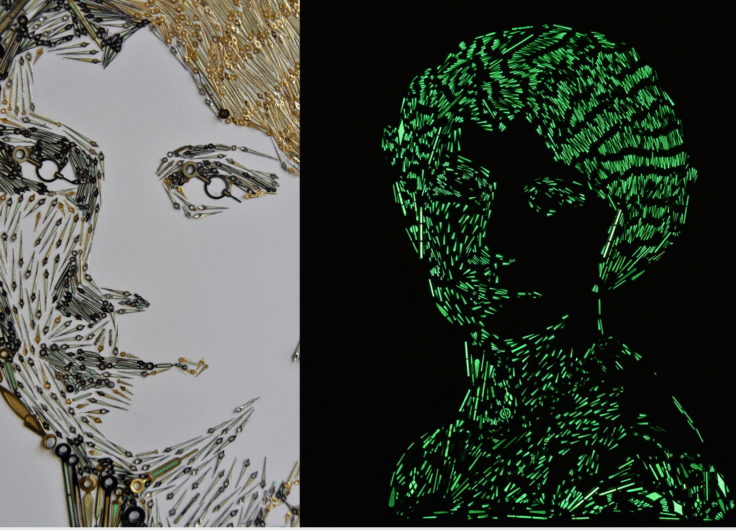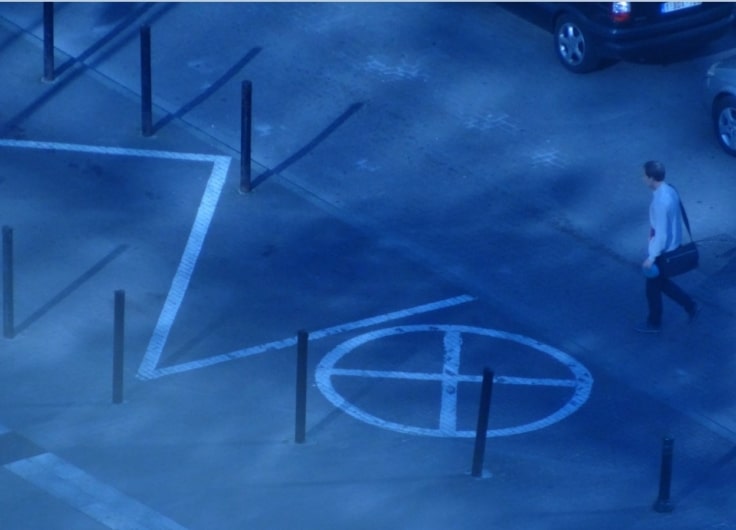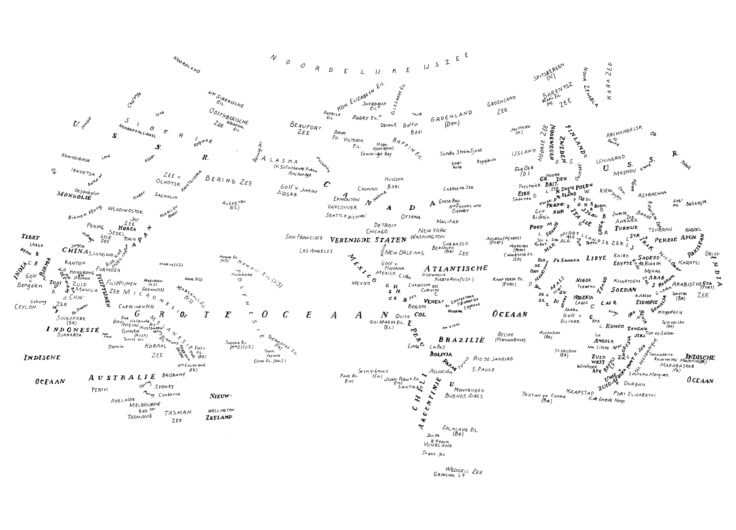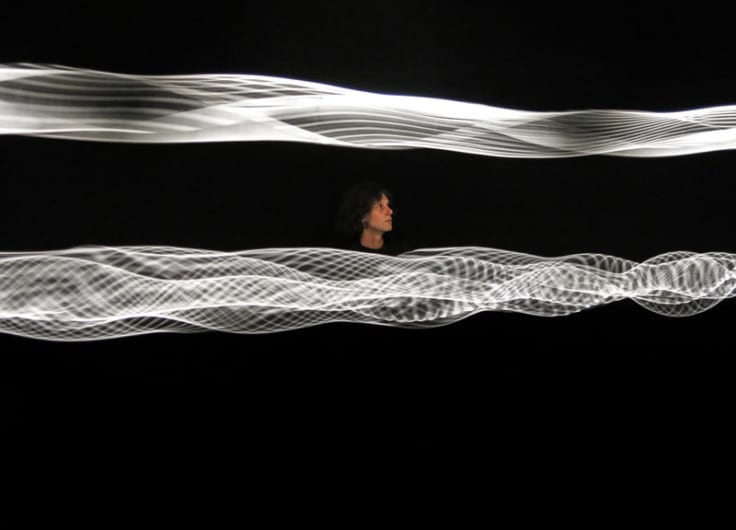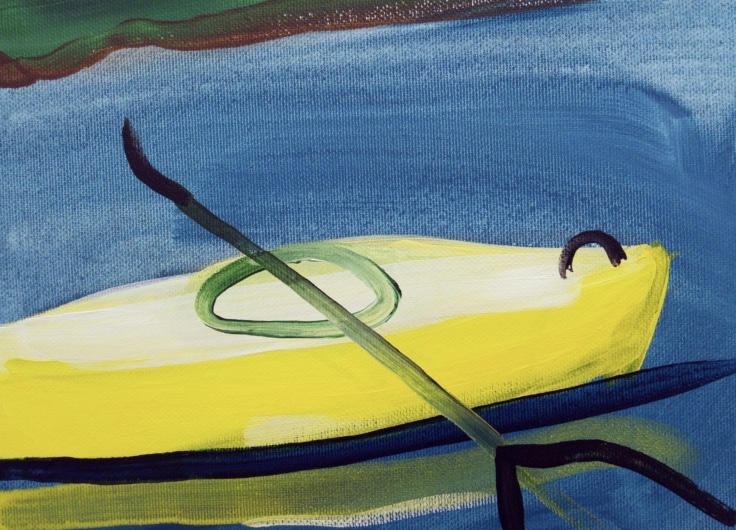Jaya Pelupessy Draws Attention to the Construction That Lies Behind the Photo
Unique works of art all about reproduction processes: the wonderful paradox at play in the work of Dutch artist Jaya Pelupessy. In two exhibitions by the same name, he was displaying work from his most recent project Manufactured Manual – focusing on photography without taking any pictures himself. This turns out to be a logical development in his oeuvre.
Everyone has a camera in their pocket these days, one that you can also use to make calls, and most people probably take more photos than they make phone calls on an average day. This creates an enormous stream of images – larger than ever before. It has therefore become quite difficult to imagine that photos have, or at least had, a very physical feel: from the developing bath to the photo album – and even the camera itself too. For many people, the mobile phone has taken over this function, and it can also put the captured image online. On top of this, many images travel all over the world, while remaining digital files. This is one of the reasons why Jaya Pelupessy (b. 1989) feels it’s important to be busy with his hands. As a result, he likes to combine old techniques, such as screen printing, with digital media.
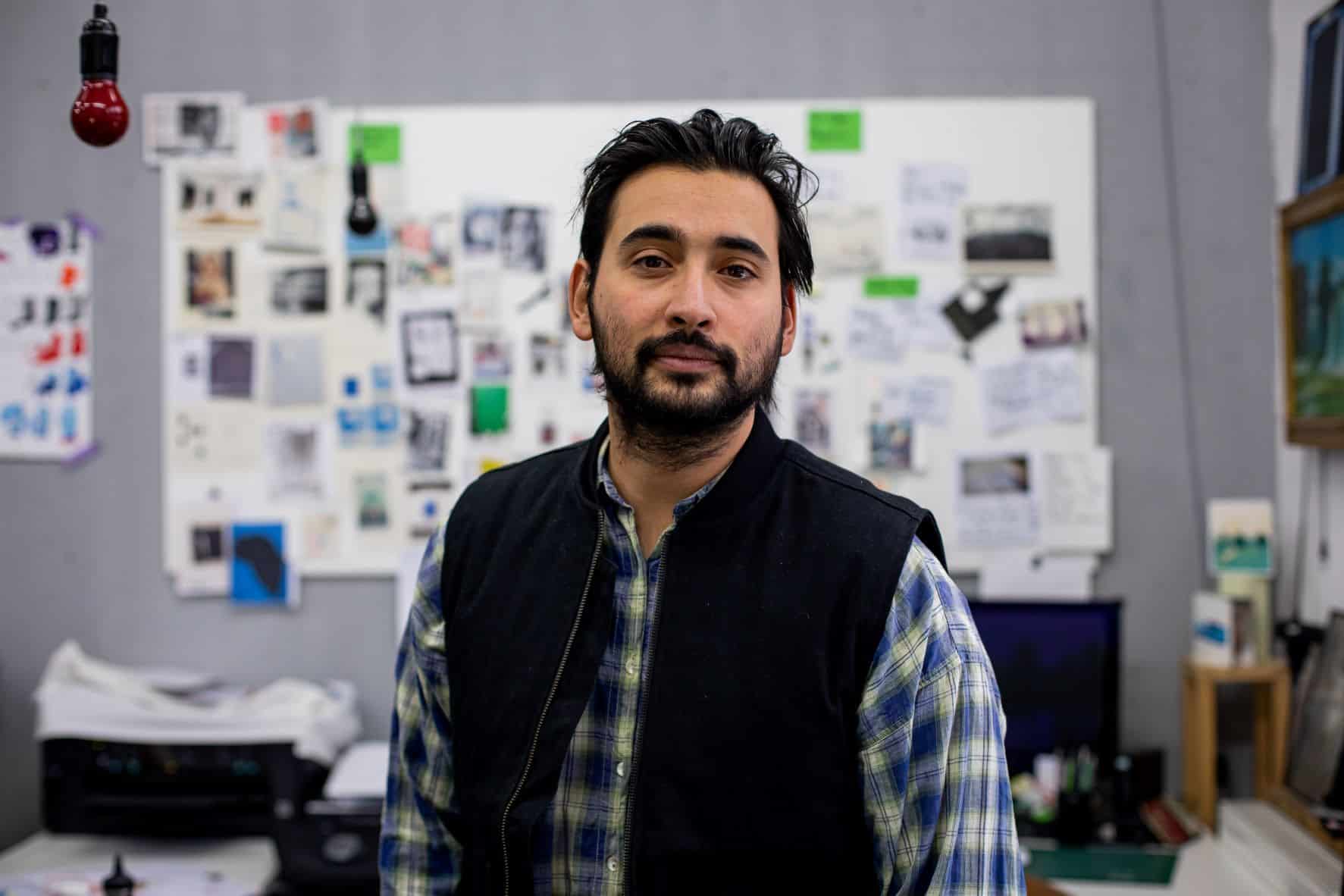 Jaya Pelupessy
Jaya Pelupessy© Lize Kraan
Two photos, two stories
Pelupessy has been interested in photography for a long time. In secondary school, he used to take action photos of his friends snowboarding, but he didn’t really see the need to study photography any further. When he eventually did choose to study photography, at the Utrecht School of the Arts, it wasn’t in order to learn how to take the best possible pictures. His choice of study was motivated precisely because he realised that the medium had limitations: in particular the fact that you can tell a completely different story with a slightly different angle or with slightly different framing. This realisation came to him when he saw two photos, taken at the same time, both of the large Saddam Hussein statue being brought down. One showed a group of men cheering in celebration that Iraq had been liberated. On the other, shot from a slightly different angle, you could see some of their despairing compatriots: what would happen to their country now?
One of the core themes of Pelupessy's work is the way in which people communicate with each other through images
The friction between those two photos touches on one of the core themes of Pelupessy’s work: the way in which people communicate with each other through images. On a somewhat more mundane level than world news, you can think of how people present themselves in front of the camera a little more favourably – the construction that lies behind the photo. The fact that he mainly focuses on photography and to a lesser extent on film is because cameras are the main supplier of the (online) image stream. Pelupessy says himself that he feels more connected to the constructive than to the spontaneous branch of photography. Aesthetics don’t really interest him much, he says; neither does he consider himself a particularly good photographer.
Emphasis on process
Sure, his art has an obvious visual appeal, but that’s not the aim – it’s just the means. What matters to him is that we as spectators are stimulated to actively think about images and how they are constructed. As such, Pelupessy does not see himself as an educational or pessimistic artist – he is rather someone who conveys a kind of enthusiasm. This is clearly visible in his adventurous, process-oriented approach. This is beautifully expressed in Studio Sculptures (2017 – present), for which Pelupessy makes use of scale models. He used to make these in any case, to determine the spatial arrangement of his work for an exhibition, and secretly he sometimes thought they were more beautiful than the final work. Eventually, he took this fact and combined it with a collection of photos he had not yet used. To do this, he took a number of photography tools – including a developing bath and a reflection screen – and positioned them as if they were sculptures. The result was aesthetically beautiful photos, but that wasn’t the point.
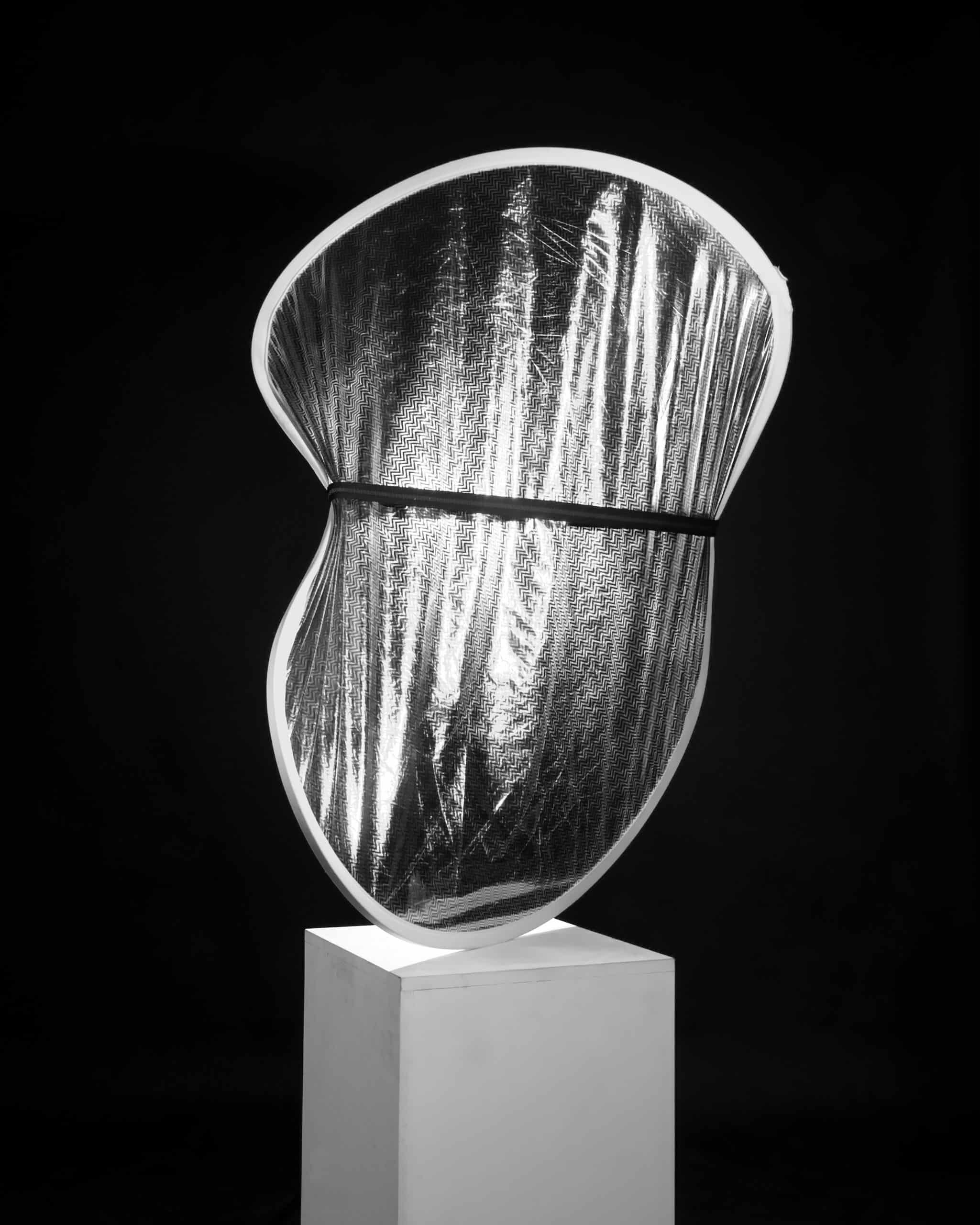 'Reflector Screen' from The Sculpture Series, 2017
'Reflector Screen' from The Sculpture Series, 2017© Jaya Pelupessy
However, after introducing one of these objects into a scale model, photographing the scale model, and then presenting a print of that photo in the very same location in the model itself, something emerged that went beyond aesthetics: a kind of dizzying play with realities, not quite unlike the Droste effect. Pelupessy also made ‘mistakes’ in the photos. A light switch in print might be flicked the opposite way to its counterpart in the physical space. As a result, you start to wonder what you’re looking at. Are you actually in the space when you’re looking at it in a photo?
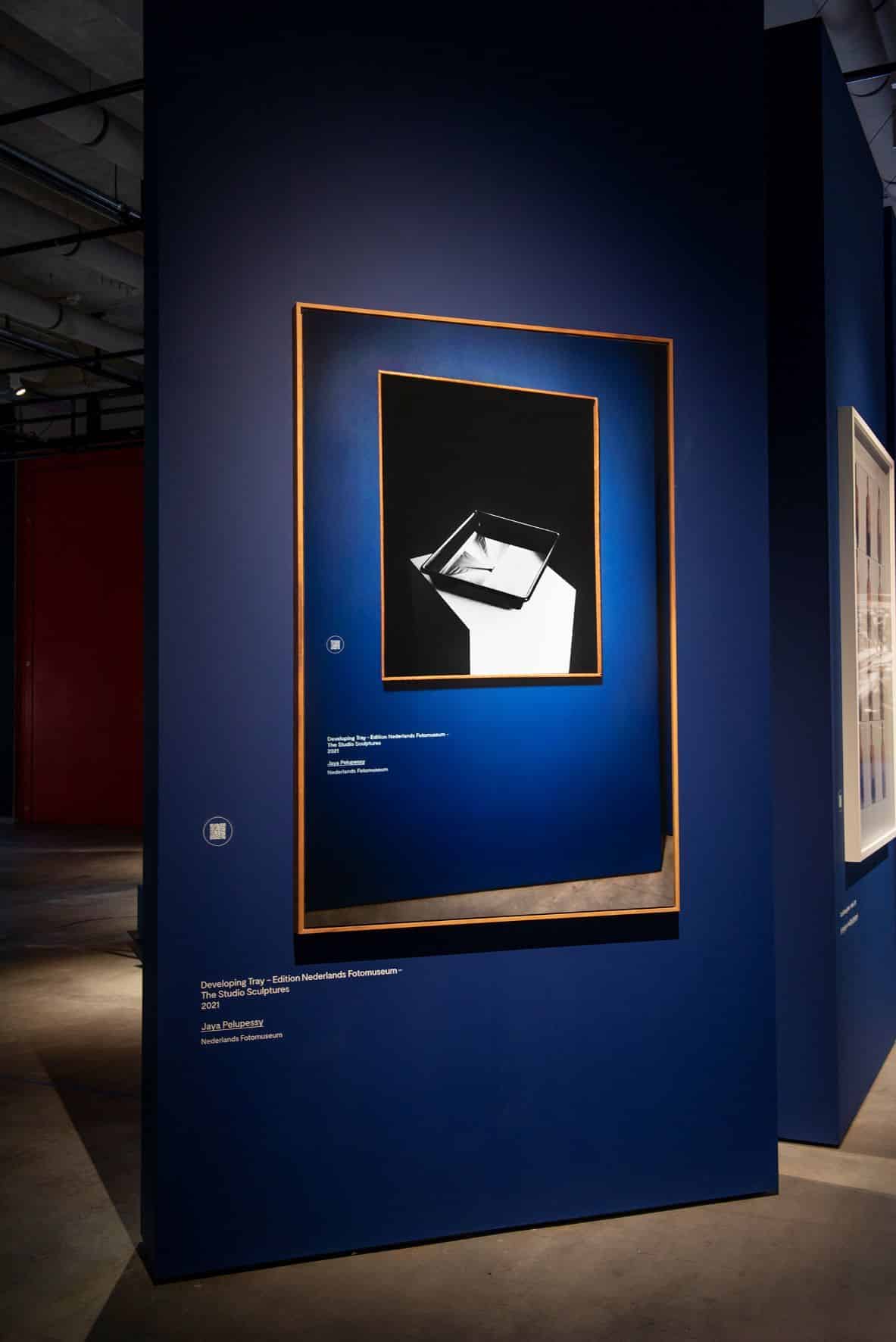 Developing Tray' from The Sculpture Series, edition Nederlands Fotomuseum, 2021, installation photo, in the Gallery of Photography
Developing Tray' from The Sculpture Series, edition Nederlands Fotomuseum, 2021, installation photo, in the Gallery of Photography© Jaya Pelupessy
A series of unique artworks
A Studio Sculptures photo like this literally only works when presented in the location in which it was taken, otherwise, the effect is lost. During our conversation, Pelupessy wonders whether the work of art can actually exist in any other place. This series is therefore a perfect example of how Pelupessy deliberately sabotages the reproducibility of his work. Another project that links directly to this is Flatten Image (2019 – present), for which he used the camera to capture images directly onto photographic paper. These photos look like negatives – effectively the closest you can get to ‘an original’ in photography – but aren’t. You can’t use them to endlessly reprint the image, making them unique works of art. In doing so, he goes against how photography is usually presented and traded in print form, as a limited or endless edition.
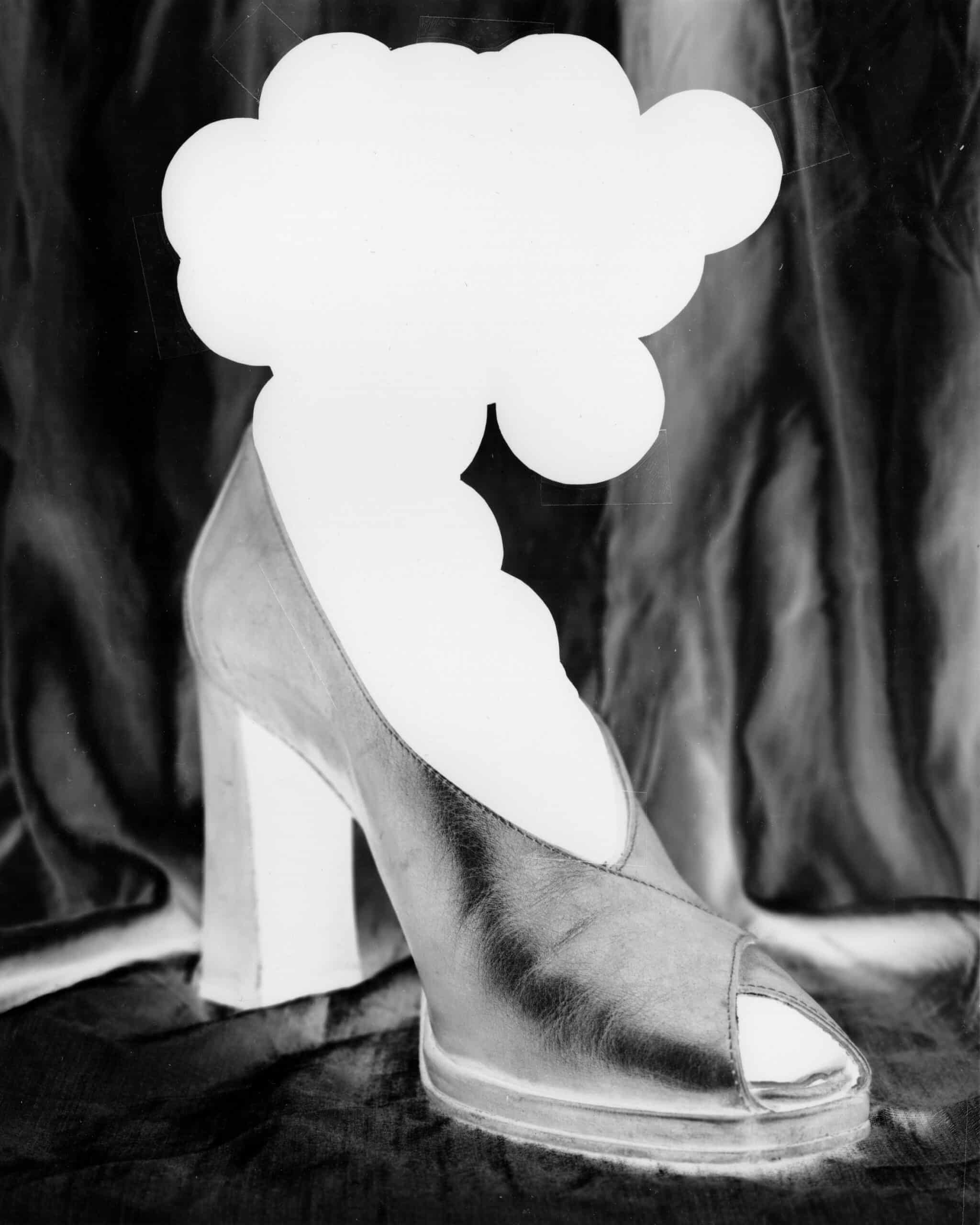 'Shoe' from Flatten Image, 2019, direct negative photograph
'Shoe' from Flatten Image, 2019, direct negative photograph© Jaya Pelupessy
The function of technological (re)production processes is a common thread through Pelupessy’s oeuvre, although it took a few projects before he realised this himself. He now sees his work as a conglomerate of projects that can coexist for a longer period of time and that link together thematically and in form. However, this also creates an interesting paradox: Pelupessy often makes collections of (!) unique pieces. This also has to do with the fact that he is process-oriented; it’s not about the end result, but rather the construction. This becomes all the clearer when we see different versions side by side. This gives a better understanding of how the process works and how it can lead to different results. Such temptation naturally leads to a more active style of viewing anyway.
Disruptive frames
A number of beautiful videos are circulating on the internet in which Pelupessy shows how he uses a screen-printing technique to make the photo collages of his latest series of artworks, Manufactured Manual (2020 – present).
He has digitally composed collages based on images from his extensive collection of photography manuals and instruction books. Think instruction manuals, but also photography textbooks and advertising brochures for colour films. He then applies these collages to a silk-screen frame using multi-colour lighting. The silk-screen frame is really a tool designed to produce multiple copies of the same work. Pelupessy by contrast, promotes that tool, which is geared towards reproduction, to the bearer of a unique work of art.
Pelupessy promotes the tool, which is geared towards reproduction, to the bearer of a unique work of art
In Manufactured Manual, there is a remarkable amount of repetition within the same image. A clear example is Collage #6 (2021), which features three photos of the same young woman, but with different exposure times. The instructive roots of the visual material emerge in this: the repetition is clearly a demonstration. Another repetition – one of a vase with flowers – is reminiscent of software like Photoshop with which image elements can be ‘cloned’. It is also reminiscent of the different windows and tabs that users of today’s technology have become accustomed to.
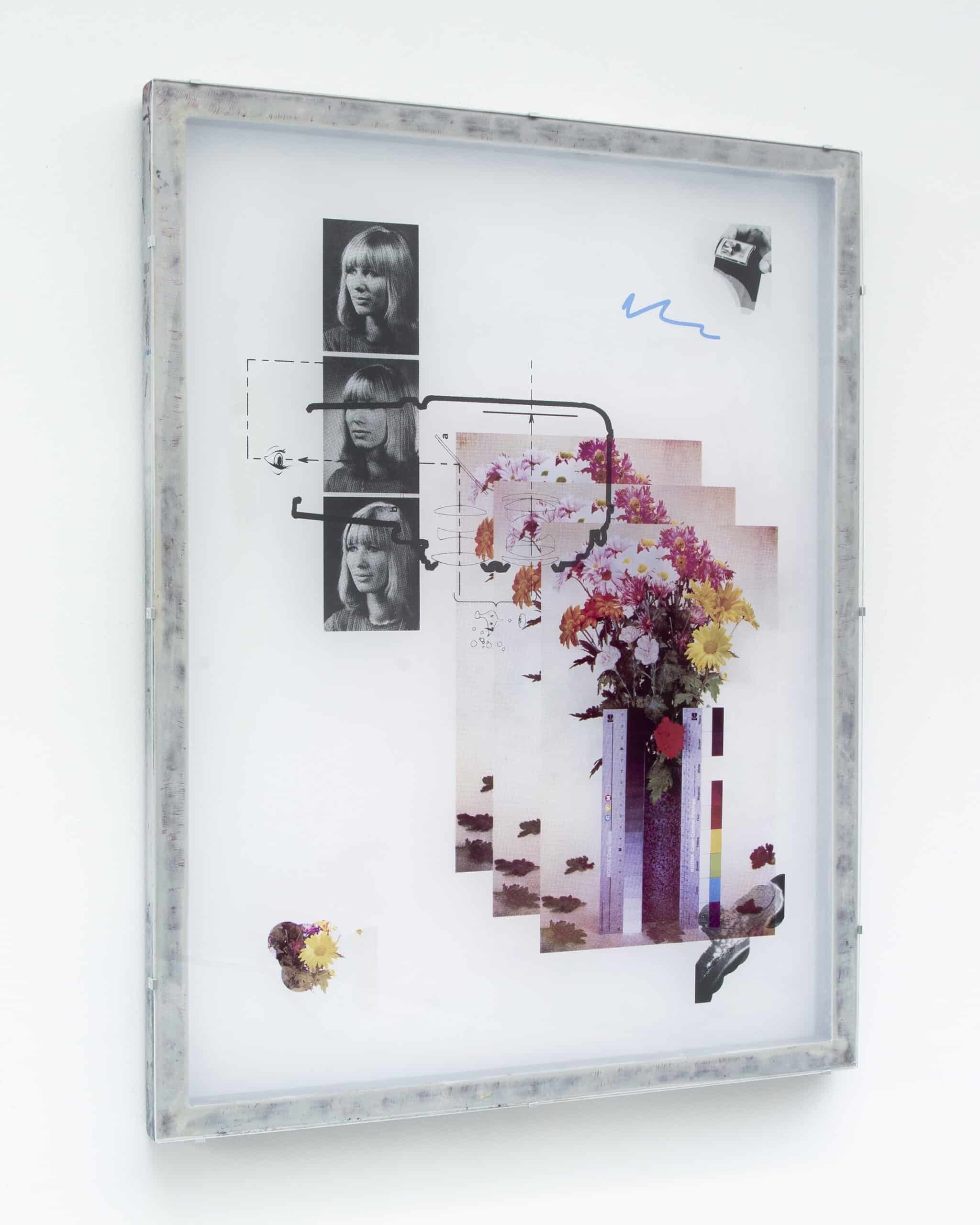 'Collage #6' from Manufactured Manual, 2021
'Collage #6' from Manufactured Manual, 2021© Jaya Pelupessy
When you walk through the exhibition space, which was in Centraal Museum in Utrecht, you get the feeling that you are scrolling through a physical Instagram feed or a Google Images overview: you constantly switch between varying scenes like interiors, people swimming, ducks and flowers – sometimes even within the same collage. But in this context, those juxtapositions feel much more disruptive than online, such that you start to look more critically. Perhaps this confusion arises because it’s tempting to consider works of art as coherent wholes with one meaning? Is there actually a construction behind that meaning, or rather just behind the way we look?
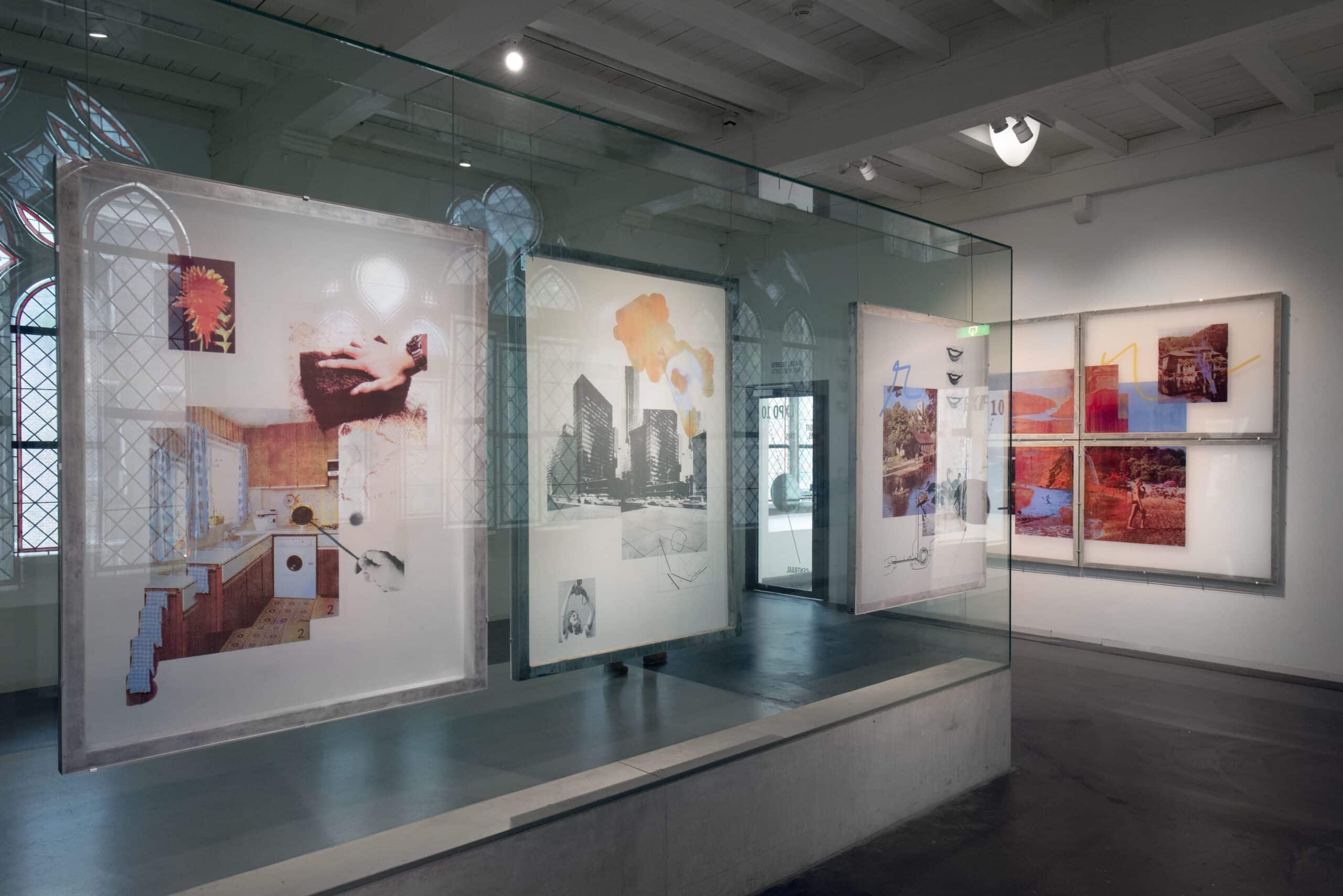 ‘Manufactured Manual’ in Centraal Museum Utrecht
‘Manufactured Manual’ in Centraal Museum Utrecht© Jaya Pelupessy / Centraal Museum Utrecht
Manufactured Manual could be seen in Centraal Museum (Utrecht) and at Galerie Caroline O’Breen (Amsterdam). A site-specific piece of work from the Studio Sculptures series can be seen in the semi-permanent Gallery of Honour of Dutch Photography, in the Nederlands Fotomuseum (Rotterdam).


